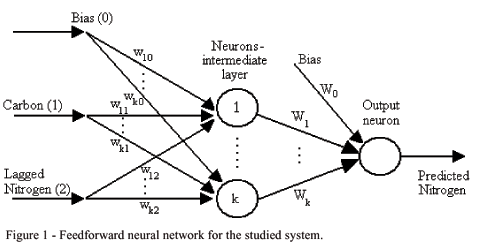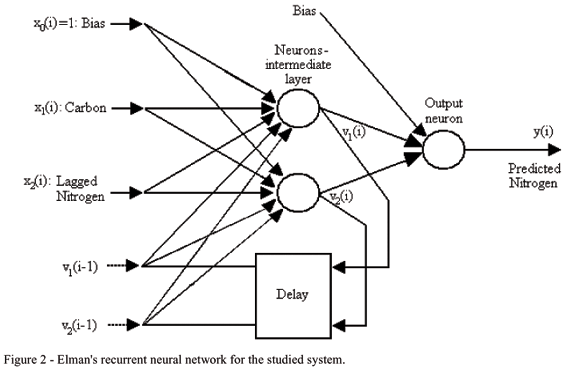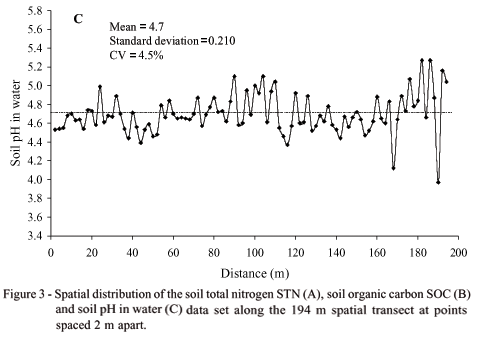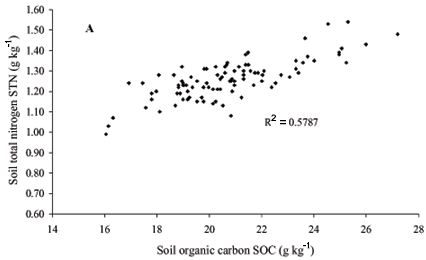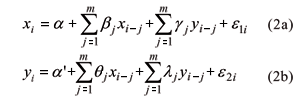The study of soil property relationships is of great importance in agronomy aiming for a rational management of environmental resources and an improvement of agricultural productivity. Studies of this kind are traditionally performed using static regression models, which do not take into account the involved spatial structure. This work has the objective of evaluating the relation between a time-consuming and "expensive" variable (like soil total nitrogen) and other simple, easier to measure variables (as for instance, soil organic carbon, pH, etc.). Two important classes of models (linear state-space and neural networks) are used for prediction and compared with standard uni- and multivariate regression models, used as reference. For an oat crop cultivated area, situated in Jaguariuna, SP, Brazil (22º41' S, 47º00' W) soil samples of a Typic Haplustox were collected from the plow layer at points spaced 2 m apart along a 194 m spatial transect. Recurrent neural networks and standard state-space models had a better predictive performance of soil total nitrogen as compared to the standard regression models. Among the standard regression models the Vector Auto-Regression model had a better predictive performance for soil total nitrogen.
soil attributes; prediction models; spatial transect; latent variables

